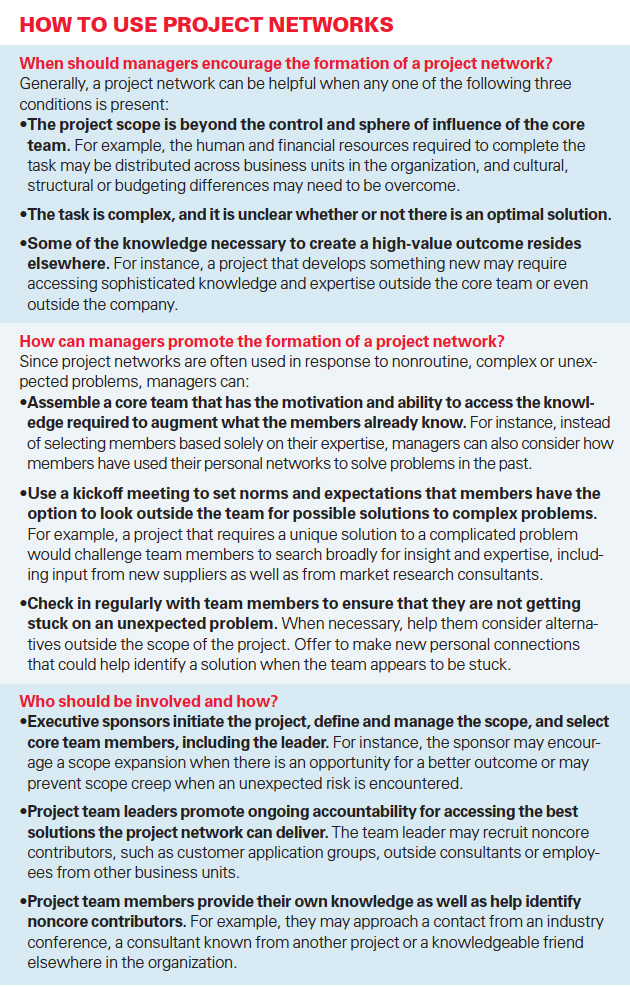In the Spring issue of the MIT Sloan Management Review, "Why Project Networks Beat Project Teams", summarizes research supporting the cultivation of project networks.
Unlike a project team that relies only on the knowledge held by members or a personal network that individuals use to solve their individual problems, the project network combines the knowledge held by the members of a team with the problem-solving capabilities of the team members’ personal networks to achieve a project goal.
The integration of project team members’ knowledge with the capabilities from their personal networks is what differentiates a project network from other kinds of individual and team-based work. This summarizes key actions the research suggest bring value:









